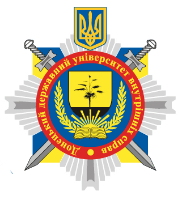GROUNDS AND PROCEDURAL PROCEDURE FOR PRESENTATION FOR IDENTIFICATION IN CRIMINAL PROCEEDINGS
DOI:
https://doi.org/10.32782/2523-4269-2023-83-51-55Keywords:
identification, interrogation, grounds, sufficiency of evidence, identification.Abstract
The article notes that the information and cognitive process of investigating criminal offenses is carried out in the form of criminal procedural evidence by means provided for by law, which includes investigative (detective) actions. The author examines the grounds and tactical features of one of them, namely, the presentation of objects of the material world (primarily a person) for identification (forensic identification by an image imprinted and stored in a person's memory). Attention is drawn to the relevance of identification of persons by their mental image under martial law and in the post-war period. The author presents and analyzes the opinions of scholars on the factual and procedural grounds for presenting objects (persons) for identification, organizational and psychological conditions of its conduct, as well as the assessment of the results which may be obtained in the course of its conduct. Attention is drawn to the ambiguity of the definition of the factual grounds for conducting investigative (detective) actions in the current CPC of Ukraine. It is proved that the absence of an indication of the grounds for presentation for identification in the provisions of the current CPC cannot be considered as evidence that they are not required at all when decision making on its conduct. The factual basis is proposed to be understood as the availability of procedural and nonprocedural data (information) by the investigator or prosecutor, which allows to conclude that this investigative (detective) action is necessary (expedient) and possible. If a party to the criminal proceedings or the victim objects to this, a reasoned decision (ruling) of the prosecutor or investigating judge should be considered as the legal basis for presentation for identification in the course of a remote pre-trial investigation. It is noted that the decision to present for identification is made in the context of tactical risk. It is suggested that when planning this investigative action, one should consider such circumstances, choose the best options for behavior during the identification, and conduct an investigative action in conditions when the person being presented for identification does not see the identifier. The conclusions propose to clarify part one of аrticle 228 of the CPC and to restate it as follows: “Before presenting a person for identification, the investigator or prosecutor shall interrogate the person about the person's appearance and characteristics, the circumstances in which he or she saw the person, and find out whether he or she can recognize the person. If a person cannot name the person's attributes during the interrogation, but confidently states that he or she can recognize the person, this shall be noted in the protocol”.
References
Лук’янчиков Б.Є., Лук’янчиков Є.Д., Петряєв С.Ю. Криміналістична ідентифікація об’єктів за ідеальними відображеннями : монографія. Київ : НТУУ «КПІ» Вид-во «Політехніка», 2016. 204 с.
Конюшенко Я.Ю. Ґенезис інституту пред’явлення для впізнання за законодавством України. Науковий вісник публічного та приватного права. 2018. Випуск 2. Том 2-2. С. 43–47.
Лук’янчиков Є.Д. Достатність інформації – підстава для пред’явлення для впізнання. Вісник Запорізького юридичного інституту. 1998. № 2(4). С. 144–153.
Кримінальний процесуальний кодекс України. Науково-практичний коментар / за заг. ред. В.Г. Гончаренка, В.Т. Нора, М.Є. Шумила. Київ : Юстініан, 2012. 1224 с.
Нирка Є.О. Теоретичне обґрунтування підстав та умов пред’явлення ля впізнання у кримінальному провадженні. Правовий часопис Донбасу. 2022. Випуск № 4(81). С. 118–122.
Дубинський А.Я. Вибрані праці. Київ : Центр учбової літератури, 2014. 430 с.
Коваленко А.В. Особливості пред’явлення для впізнання під час розслідування посягань на життя та здоров’я журналістів. Сучасні тенденції розвитку криміналістики та кримінального процесу : тези доп. Міжнар. наук.-практ. конф. до 100-річчя від дня народження проф. М.В. Салтевського (м. Харків, 8 листоп. 2017 р.) / МВС України, Харків. нац. ун-т внутр. справ. Харків, 2017. С. 102–103.
Лукьянчиков Е.Д. Криминалистическая идентификация объектов по следам памяти. Донецк : Академия, 1998. 112 с.
Бурдига І. Воєнні злочини РФ в Україні: про тонкощі розслідування. URL: https://www.dw.com/uk/ofis-genprokurorapro-tonkosi-rozsliduvanna-voennih-zlociniv-rf-v-ukraini/a-64919471 (дата звернення: 10.05.2023)ю
Лускатов О.В. Проблемні аспекти повторного пред‘явлення для впізнання. Актуальні питання теорії і практики криміналістичної науки : матеріали Всеукраїнської науково-практичної конференції, присвяченої 50-річчю кафедри криміналістики та судової медицини Національної академії внутрішніх справ, 23 січня 2015 р. Київ : Видавничий дім «Гельветика», 2015. С. 111–114.
Кримінальний процес : підручник / за ред. В.Я. Тація, Ю.М. Грошевого, О.В. Капліної, О.Г. Шило. Харків : Право, 2013. 824 с.
Гончаренко В.Г. Лекції з судової психології, читані в Академії адвокатури України. Київ : Академія адвокатури України, 2008. 280 с.





